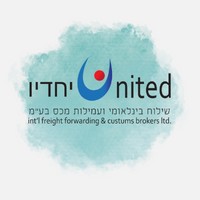Many products placed on the EU market have CE marking affixed to them. This marking is the visible symbol showing that the manufacturer has taken all necessary measures to ensure that the product complies with the applicable safety legislation. It plays a crucial part in the New Legislative Framework for the EU internal market for goods which entered into force at the beginning of 2010. The New Legislative Framework provides for the appropriate control of testing laboratories and certification bodies, and more importantly sets out a Union policy on surveillance of products on the market and of effective controls of products from third countries. European product legislation was revolutionized by the “New Approach” introduced in 1985. This New Approach has become a role model for Better Regulation. The Legislation sets out the levels of protection that must be achieved and does not pre-judge the choice of technical solutions to achieve the levels. Today, the so called New Approach directives cover a large proportion of products marketed in the EU in more than 20 industrial sectors, including electro-technical products, machinery, radio/telecoms equipment, toys, medical devices, construction products and high-speed rail systems. It is estimated that the trade in products covered by the major New Approach sectors is in excess of €1500 billion per year. Most products covered by this legislation have CE marking affixed to them, which is the visible symbol that indicates that a product complies with all the applicable safety legislation. 1. Improving the understanding of CE marking The CE marking is affixed by the manufacturer to its products. By placing CE marking on a product, he declares the product’s conformity with the applicable legal requirements valid in Europe. The manufacturer on his sole responsibility has to verify that the goods he is selling comply with all relevant legislations or – if necessary – has to have it examined by a notified conformity assessment body for that purpose. Not all products sold in the EU need to bear CE marking. CE marking applies to 24 different product categories, ranging from electrical equipment to toys and from explosives to medical devices. Each product falls under one or more Directives, which determine the specific requirements that the product must meet in order to be CE-marked. Only the product categories subject to specific directives are required to be CE marked. Wholesalers and retailers also bear some responsibility: they must verify that all the goods they distribute which require a CE marking are actually carrying one and that the necessary controls have been carried out. In order to avoid non-conformity abuses, legal measures and economic sanctions have been established to deter the vast majority from doing so. Six steps to obtain the CE marking To comply with legal requirements, manufacturers have to follow six necessary steps in order to make their products ready for the market: • Identify the directive(s) and harmonized standards applicable to the product. The essential requirements products have to fulfill (e.g. safety) are harmonized at EU level and are set out in general terms in the Directives. Harmonized European standards are issued with reference to the applied directives and express in detailed technical terms the essential requirements. • Verify the product-specific requirements. It is up to manufacturer to ensure that his product complies with the essential requirements of the relevant EU legislation. Full compliance of a product to the harmonized standards gives to the product the “presumption of conformity” with the relevant essential requirements. The use of harmonized standards remains voluntary as manufacturers may decide to choose other ways to fulfill the essential requirements. • Identify whether an independent conformity assessment is required from a Notified body. Each directive covering a particular product specifies whether an authorized third party (Notified Body) must be involved in the conformity assessment procedure necessary for CE marking. • Test the product and check its conformity to the EU legislation. One part of the procedure is a risk assessment. By applying the relevant harmonized European standards, the manufacturer will be able to fulfill the essential legislative requirements of the directives. • Draw up and keep available the required technical documentation. The manufacturer has to establish the technical documentation required by the Directive(s) for the assessment of the product’s conformity to the relevant requirements and a risk assessment. Together with the EC declaration of conformity, the technical documentation must be presented on request to the competent national authorities. • Affixing the CE mark to your product and EC Declaration of Conformity. The CE Marking must be affixed by the manufacturer, according to its legal format visibly, legibly and indelibly to the product or its data plate. If a Notified Body was involved in the production control phase, its identification number must also be displayed. 2. Improved coherence and comparability of designation, operation and monitoring of Notified Bodies Notified bodies are private companies and operate in a competitive market. Whilst this can be good for the manufacturer, it can lead to unfair practices and less rigorous implementation of costly procedures, by those seeking to bend the rules. Also, different notified bodies may take different approaches when carrying out their work. This represents, not only a risk of unsafe products on the market, but also distorts competition within the manufacturing industry. Unfortunately, some Member States have more stringent criteria than others for designation of Notified Bodies, which results in an uneven playing field in Europe. Accreditation is a formal system which provides an independent attestation of the competence, impartiality and integrity of conformity assessment bodies. Accreditation bodies are organized at European level into the European co-operation for Accreditation (EA). EA ensures that National accreditation bodies all work to the same requirements, so that accreditation granted from one body is directly comparable to that granted from another. However, not all European accreditation bodies are members of EA and not all Notified Bodies undergo accreditation. The New Legislative Framework for the free movement of goods therefore provides for: • the decentralized competence assessment and monitoring of Notified Bodies under the responsibility of each Member State; • a legal framework for accreditation and co-ordination at EU level using the existing organization of EA as a foundation for this. This will provide the EA with public recognition and provide it with the authority it currently lacks to provide accreditation services to all Notified Bodies. It will also ensure that all Member States use accreditation as a basis of notification. 3. Common legal framework to ensure an equivalent level of market surveillance throughout the EU The enforcement of product safety legislation is an important task; not only to protect consumers and other users from unsafe products but also to ensure a level playing field for reputable businesses. In the EU market surveillance is the responsibility of the Member States. With the RAPEX system (see IP and Memo 10/130 on the 2009 Annual RAPEX Report) the European Union has an effective and efficient system in place to share information about dangerous products found on the European market. At the same time, however, the devolved nature of enforcement responsibility means that in practice surveillance efforts are still largely guided by national priorities, risk assessments can diverge significantly for the same product, as do measures and penalties. Moreover, the effect of continuing globalization, with more and more products coming into the EU's internal market from third countries, is making it increasingly difficult to justify a purely national approach to enforcement. The nature of our internal market, combined with the effects of global supply chains, make it necessary to adopt a truly co-ordinate approach to market surveillance. Despite significant progress in recent years, such cooperation has not yet become a reality. Therefore, the New Legislative Framework for the free movement of goods allows: • flexibility of organization at national level, to take account of national conditions • whilst establishing specific minimum requirements for operation. It also foresees the extension of the existing co-operation mechanisms (it builds upon the existing national structures), improves the traceability of products and clarifies the obligations for all economic operators, i.e. manufacturers, distributors, and importers, etc. מאמר זה נכתב על-ידי ראובן פרץ, יועץ לתקינה ורגולציה בינלאומית – אישור מוצרים פורסם באתר מכון הייצוא |






